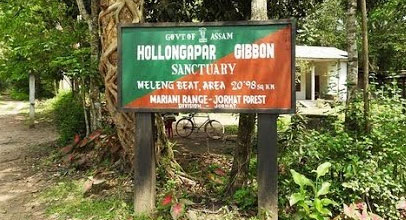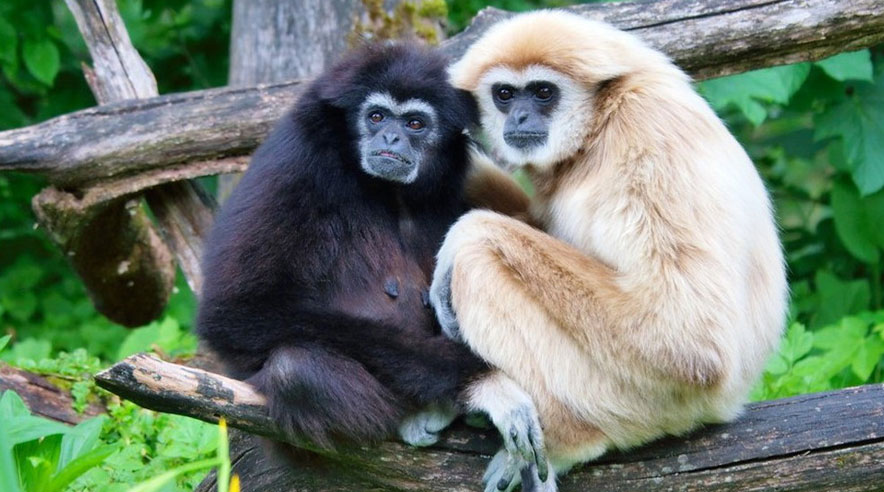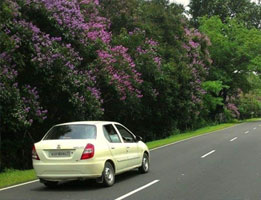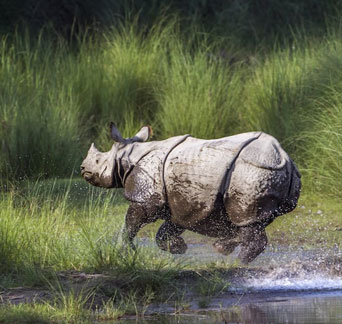Hollongapar Gibbon Wildlife Sanctuary
Gibbon Wildlife sanctuary is a small green protected area sprawl over approximately 21 sq km located near the town of Jorhat, Assam. Earned its name after the only Ape Hoolock Gibbon found in India. Earlier it was named as the Gibbon Wildlife Sanctuary or Hollongapar Reserve Forest. It had been carved out of the Hollongapar Reserve Forest after the dominant tree species – the Holong.


Gibbon Wildlife Sanctuary is an abode of seven out of 15 species of Apes in India. It earned the status of wildlife sanctuary in the year of 1997 by the Assam State Government. Initially in 1881, its forest area extends up to the foothills of the Patkai Mountain Range. And since then, this forest area has been fragmented and occupied by the tea gardens and small villages. In the early 1990s forest department used artificial regeneration method to develop well-stocked forest as a result it developed into rich biodiversity. Gibbon Sanctuary gives habitat to India’s only Gibbons – the hoolock gibbons. The upper canopy of the forest is dominated by the Hollong tree while the Nahar species of plant tree dominates the lower canopy. The lower region of the park is bestowed with evergreen shrubs and hurbs plants.
Flora in Gibbon Wildlife Sanctuary
The Gibbon Sanctuary is a habitat for – Dipterocarpus macrocarpus (Holong), Terminalia myrocarpa (Halakh), Artocarpus chama (Sam), Michelia champaka (Titachopa), Canarium reiniferum (Dhuna), Aqualaria agolacha (Agaru or Sachi), 8 Garcinia species(Thekera), Sepium buccatum (Selng), Lagerstoemia flosreginae (Azar) and many more. Many species of bamboo, fern, orchids and medicinal plants are also found here.

Fauna in Gibbon Wildlife Sanctuary
Gibbon Wildlife Sanctuary is the most diverse hotspot for primates in India. Out of fifteen species of Primates in India, seven species of primates are found in Gibbon Sanctuary, and they contain: Slow Lories, Rhesus macaque, Assamese macaque, Stum-tailed macaque, Pigtailed macaque, Capped langur, Hoolock gibbon.

Gibbon Wildlife Sanctuary is famous due to following reasons.
1. It is also recognized as important bird area (IBA) situated in the state of Assam by Birdlife International because it offers habitation of almost 800 different species of avifauna of which several are extinct.
2. Hoolock is only ape lives on a tree which doesn’t have a tail found in this region.
3. This wildlife sanctuary provides habitat of ample of rare and priceless species of tree and other animals.
4. The Gibbon Wildlife Sanctuary is a true gift of nature for nature lovers.
How to Reach Gibbon Wildlife Sanctuary
By Air : The airport to Gibbon Sanctuary is Jorhat. It is situated at a distance of only 22 KM from Jorhat city.
By Rail : Mariani is the nearest railhead to Gibbon Sanctuary. It is only five minutes of drive from Mariani railway station.
By Road : Mariani is well connected by motorable road with different city.



Best Time to Visit Gibbon Wildlife Sanctuary
Gibbon Wildlife Sanctuary is Assam is open for tourists round the year but an ideal season to explore this Evergreen Park is June to July and February to March.
Where to Stay in Gibbon Wildlife Sanctuary – Gibbon Forest Rest House – a small rest house located within the sanctuary offers night stay inside the park.








